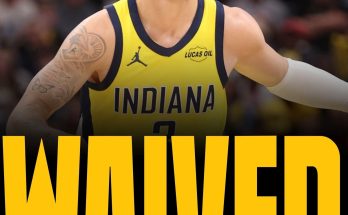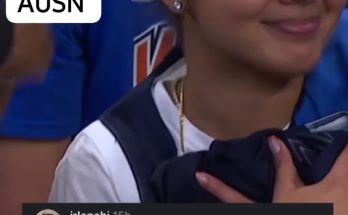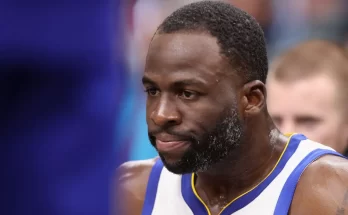June 2025 marked a watershed moment for Florida football recruiting. Under Billy Napier’s leadership, the Gators didn’t just compete—they dominated within their own state. Historically, Florida’s talent pool is a prime target for football powerhouses like Georgia, Alabama, Ohio State, and even in‑state rivals FSU and Miami. Until this year, the Gators were often outpaced in securing elite, high‑profile recruits from Florida’s high school ranks. But in June 2025, that narrative changed dramatically.
The shift started bubbling early in the month. The Gators landed a commitment from G’Nivre Carr, a three‑star offensive lineman from IMG Academy, on June 1. Not jaw‑dropping, but meaningful—the first domino in June’s recruiting surge That same week, they pulled off what some called a coup: beating out powerhouse programs like Alabama to secure in‑state safety **Kaiden Hall**, a four‑star recruit whose official visit to Gainesville translated into a decisive commitment. Hall stood as the class’s highest-ranked recruit at that point—a symbol of the Gators’ growing momentum.
June’s success wasn’t limited to Hall. The Gators also secured the commitment of Chancellor Campbell, a 6-foot-8 three-star offensive tackle—a developmental project with the kind of physical traits coaches covet for future growth ([saturdayblitz.com][2]). Yet the real headline-grabbing capture was 4-star wide receiver **Justin Williams**, ranked 188th nationally, who committed later that weekend. Williams provided both immediate buzz and long-term potential for UF’s evolving offense .
These June additions were part of a broader strategy that paid dividends. According to GatorsWire, Florida clinched nine commitments in June 2024’s previous cycle, vaulting into the top 3 of 247Sports rankings. That pattern repeated this year: official visit weekends in June were key catalysts, with Florida hosting dozens of top players and leveraging those relationships into verbal commitments.
June also signified a proactive shift in the Gators’ approach. Instead of scrambling late, they started building their 2026 class early. ESPN reported that of eight ESPN-rated commits, seven came in the last 30 days—June 2025 being the flashpoint. High-level pledges included five-star defensive end JaReylan McCoy, four-star running back Carsyn Baker, and receivers Marquez Daniel and Justin Williams ([espn.com][4]). This signals that June didn’t just finalize the 2025 haul—it launched another wave of momentum for future efforts.
That level of in-state dominance has long eluded Florida. A Reddit fan lamented, “The only thing I am really bothered by is that most of our class came from outside the state…we’re going to Texas an awful lot…that should be complimentary to a class in a state as loaded as Florida.” ([reddit.com][6]). June’s turn reversed that trend. Now nearly half of their 2025 class stems from Florida—a strategic reclamation of local talent .
There were structural changes behind this success. After a lackluster spring, Napier chose continuity by retaining his coaching staff, leaning on performance improvements instead of personnel upheaval ([saturdayblitz.com][2]). The result: host weekends in Gainesville were more polished, visits were better managed, and prospects felt it.
That upgraded approach was tracked and appreciated. GatorsWire commended Florida’s aggressive spring and June approach: “Nobody in college football had a better June than the Gators… hosted five five-star recruits, 11 top-100 players and 33 blue-chippers on an official visit. Kudos to coach Napier for elevating Florida’s recruiting from very good to elite.” ([gatorswire.usatoday.com][3]).
The Gators also competed and won in the transfer portal. Though primarily known for high school commits, Florida claimed blue-chip transfers too—most notably cornerback Cormani McClain flipped from Colorado, and high-profile linebacker Izayia Williams committed in March to the 2026 class. The blend of high school and transfer success strengthened their recruiting brand.
Crunching the numbers: On3 noted that 44 percent of the Gators’ class hailed from Florida. The composite On3 rating hovered around 92.19, ranking them around 10th national and seventh in the SEC—a significant rebound from past classes. ESPN also ranked UF’s 2025 class top 10 nationally, anchored by 12 ESPN 300 recruits, led by WR Vernell Brown III and LB Ty Jackson.
The June recruits fit key positional needs too. Offensive line—once a blind spot—got reinforcements with Carr, Campbell, and top‑2026 tackles like Javarii Luckas from Belle Glade. Safety corps was fortified by Hall. Wide receiver depth was bolstered by Justin Williams. This balanced approach addressed both future and immediate gaps.
Fans have taken notice. On Reddit, enthusiasm is palpable: “Vernell Brown III is the current gem of this class… The class is solid, but nothing spectacular… \[but] this staff’s portal evals \[are] pretty good” . Others praised the late-season surge, calling UF’s class “solid” and noting the portal additions pushed them further up the rankings . June, in particular, became the pivot point many fans had been awaiting.
In-state recruitment isn’t just about rankings—it’s cultural. A Florida kid committing to Florida sends a message: it’s cool to stay home, build under an in-state brand, and help the Gators reclaim national relevance. It’s a long‑term foundation, not just a one‑off win. As GatorsBreakdown observed, legacy players Vernell Brown III and Ben Hanks Jr. strengthened ties with the local community and alumni network. That emotional thread can lead to tighter pipelines—more IMG and in-state kids choosing UF over out-of-state programs.
The broader impact of June’s wave goes beyond this cycle. ESPN has already noted UF’s momentum into the 2026 class through JNI McCoy and others . The offseason now centers around replicating that June model—hosting, visiting, relationship-building. It’s a generational shift: recruiting is not reactive, it’s proactive.
Challenges of course remain. The SEC remains ultra‑competitive; rival Florida State has ramped up portal recruiting; Georgia and Alabama still hoover up top national talent; and UF’s on-field results must align with the recruiting improvements to maintain credibility. June was a launch, not a destination.
Still, by reclaiming dominance in June, the Gators rebuilt a foundation other programs can’t easily shake. They weaponized their geographic advantage, optimized visits, and turned prospects into verbal commitments. The future classes are already benefitting—the same techniques are working again.
In summary, Florida’s June recruiting performance wasn’t just about added talent—it signaled a strategic shift. By focusing on homegrown prospects, managing high-volume visits, delivering a polished on-campus experience, and integrating portal assets, UF positioned itself as the in-state victor. June made that path visible, measurable, and replicable.
As recruits like Hall, Carr, Campbell, Williams—and high-profile earlier commitments from Wilson, Brown III, Stubbs, Hanks Jr.—surface for UF alumni and fans, the message is clear: Florida is back in the business of recruiting Florida. Momentum is building, and June was the tipping point.
Moving forward, the challenge is maintaining this momentum. Future classes must show the same June magic. On-field success must follow. Coaching consistency and clarity will be critical. But at least now, when a Florida kid commits to Florida, it’s not an anomaly—it’s expected. And that is perhaps the greatest triumph June delivered.


